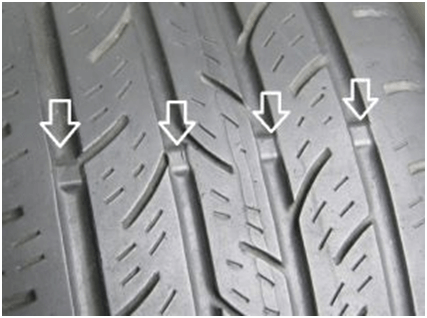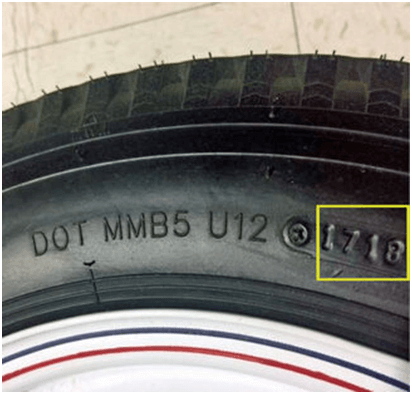
Trailers are large vehicles used to haul different items over a distance on the road. Your trailer tire requires routine maintenance and care to keep working at an optimal level. Maintenance requires constant diligent effort from you. Admittedly, you need professional help for several maintenance jobs on your trailer, but changing a tire is not one of them.
Trailer tire bears the weight of your cargo and acts as a conduit for transferring the weight to the ground. Taking care of your tires, inspecting them periodically, and replacing them once they are worn out is essential. Tire inspection should be carried out before each use to forestall disaster. Changing a trailer’s tire is an easy task. You do not need to worry about carrying out that bit of maintenance; it is a straightforward process. Our task is to assist you in learning that new skill. We will examine in detail when and how to change your tire without calling for professional help.
1. WHY DO YOU NEED TO CHANGE A TRAILER TIRE?
Your trailer tire will need to be changed for several reasons. Some of the reasons why you will need to change your tire are explained below.

1.1 Flat tire: The most common reason most people change their trailer tire is deflation. Having a flat tire is nothing to worry about; It will happen to most of us at some point. Flats can occur from preventable and non-preventable causes. However, there are maintenance checks that can reduce the occurrence of deflated tires. The most common reasons why trailer tire deflates are as follows.
1.2 Aging: Just like humans, your tires also age. However, unlike humans, your tire needs to be replaced when they are old or worn out. The average life span of a new trailer tire is five years with routine maintenance and use. However, your tires can last longer or lesser depending on how often they are used. The following are signs of an aging trailer tire that needs replacement.


1.3 Wrong Tire Usage: using the right tire for your vehicle is essential. Using the wrong tire is dangerous and a health hazard to the driver and other road users. Some trailer owners think it is acceptable to use smaller vehicle tires on their trailer to cut costs; this is dangerous. Some of the common signs that you are using the wrong tire for your trailer are discussed below.
1.4 Effect of Weathering: tires are also affected by exposure to weather conditions. A trailer is parked outside with constant sun exposure and other weather conditions, is prone to damage compared to one kept indoors. The sun bakes the tires all day – for an extended period. The constant exposure to weather conditions can cause the tire to crack. It would be best if you considered swapping your tires once you notice cracks in them.
1.5 Low Air Pressure: Uninflated or under-inflated tires are not in a state of optimal internal pressure. Due to the pressure disparity inside the tire, it tends to heat up fairly quickly to the point of overheating. Overheating rate is even faster when the trailer is loaded. The rapid heating and subsequent cooling of the tires can lead to tire damage. It will be best if you gauge your tires regularly and reinflate them when needed.
We shall delve deep into the step-by-step guide on changing your trailer tire. It would be best if you do not skip any step.

2.1 Choose the right replacement tire for your trailer: The first step in changing your tire is choosing the suitable replacement for the old one. There are several ways of selecting the best replacement tires for your trailer. Below are some tips on picking the right tire:

2.2 Loosen the lugs: the next step is to loosen the tire’s lugs using an appropriate lug wrench before or after jacking up your trailer. However, it would be best if you loosened the lugs before jacking up the trailer. Do not completely loosen the lug nuts or remove them; loosen them partially.
2.3 Jack up your trailer: After getting a replacement tire, the next step is to jack up your trailer.

Follow the following steps to jack up your trailer:
2.4 Remove the tire: after jacking up your vehicle, the next step is to remove the bolts before sliding the old tire out completely. The bolts should be easy to remove if you have loosened them partially before jacking up the vehicle. Keep the bolts together, so you do not lose any of them.
2.5 Inspect the wheel hub: After removing the tire, turn your attention to the wheel hub. The wheel hub is where the tires attach. It is invisible unless you take the tires off. Check the bearings and studs, ensure they are in pristine conditions. Check for signs of buckling and cracking along the wheel hub.
2.6 Put the new tire in: The next step is placing the new tire in place. Step back after installing the tire to check it from a distance. Does it appear to be the standard size for your trailer? Once you are satisfied, progress to the next step.
2.7 Put the Lug Nuts back in place: pick the lugs you removed earlier and place them back in place. Use your hand to spin the lugs a bit. Using your hand will not fully fasten it, but it will hold it in place. Tighten the bolts with your hand to prevent the tire from slipping off when the trailer is lowered.
2.8 Lower the tire: as soon as you fasten the lugs in place with your hands, the next step is to lower the trailer. Lower the jack until the installed tire touches the ground. Then you will remove the wheel from under the trailer.
2.9 Tighten the Lug Nuts into Place: you should lower your tires to the ground before tightening your lugs in place with a lug wrench. The ground increases the pressure in the tire; this builds up enough resistance necessary to fasten the lug into place. Tighten the lug firmly until it stops moving. Not tightening your bolts firmly in place can result in the bolts loosening or, in the worst-case, flying out of the tire while you are on the move. A loose bolt can be catastrophic with dire consequences.
2.10 Clean up your work area: with the new tire firmly in place, cleaning up the work area is the next task. Clean up the tools you used before storing them in a safe place, so you do not trip over them. Also, you can dispose of your old tires by waiting for the nearest bulk trash collection activities in your neighborhood. You can also find out if there are waste converters in your surroundings that make artwork and other stuff from used tires.
Carrying out regular maintenance on your trailer is key to avoiding unnecessary breakdown and other serious consequences. The tires are an essential component of the trailers. Without the tires, the trailer cannot be moved. Changing your tire is an easy, straightforward process. You will be able to achieve the task if you follow the steps outlined above.
Our trailer parts expert will answer your inquiries within 12 hours.

Tow-Max is a trusted supplier of trailer parts in China, known for its huge variety of products and one-stop services. We have been supplying customers from Australia, South America, the USA, and the Middle East. Our business partners are located in Sydney, Melbourne, Adelaide, Mexico City, Dubai, etc.
No.163-1, Shang yang Road, Dongqian Lake Industrial Zone, Ningbo, 315121, Zhejiang, China
+86-574-8786-2718
+86-574-8786-2717
sales(at)soaringtrailerparts.com
©Copyright 2020. Tow-Max. All rights reserved. Powered by MML.